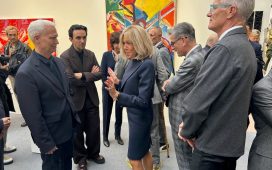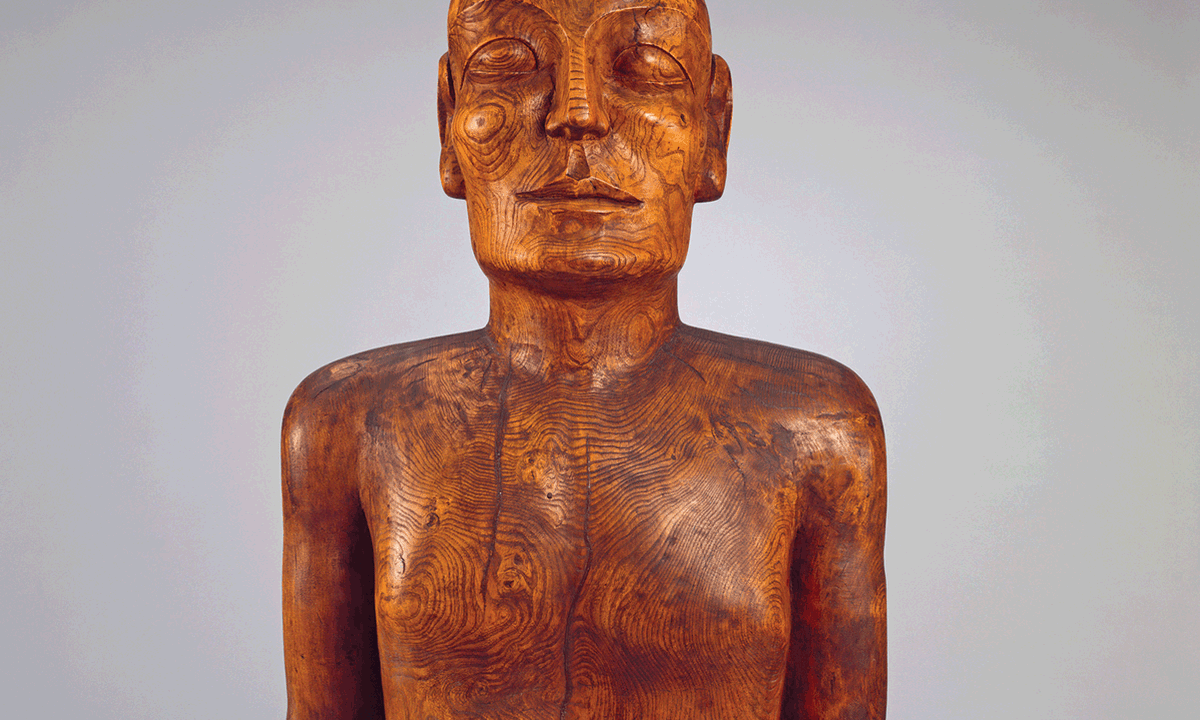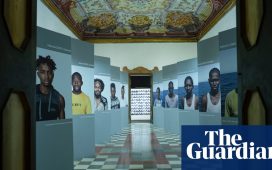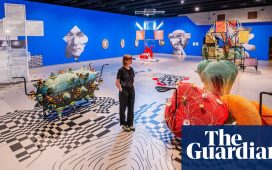Alvin Ailey was a momentous figure in American dance. One of his most substantial and lasting achievements was to transform ideas of what a modern dance company could be, collapsing distinctions between diverse worlds like concert dance, jazz and Hollywood entertainment. He was also a transformational figure for the Black community: the dance institutions that he built in his lifetime – the Alvin Ailey American Dance Theater and the Alvin Ailey American Dance Center – have cultivated generations of Black dance talent while sharing the experience of Black people in America.
Ailey’s creative roots go back to his childhood in rural Texas in the 1930s, where he faced racism and segregation, and stood alongside his mother in the cotton fields. He discovered dance as a teenager, and while he was coming of age he even briefly had a nightclub act in San Francisco with the writer and activist Maya Angelou. Ailey’s art was also deeply impacted by his identity as a gay Black man, although his sexuality remained largely hidden during his lifetime. Throughout his career he would also draw from other geographies and traditions, such as West Africa and the Caribbean, and this mixture of elements led to a unique figure who gave something special to the world of dance.
Ailey receives a show worthy of his greatness in Edges of Ailey – a massive enterprise that took six years to curate and which now fills 18,000 sq ft of the Whitney Museum’s fifth floor. With contributions from over 80 artists, a deep look into Ailey’s personal journals and archives, and an ambitious schedule of associated events and performances, Edges of Ailey is easily one of the biggest exhibitions that has ever graced the Whitney’s galleries.
“I’m shocked that he has not already received treatment like this, given his importance to dance,” show curator and art scholar Adrienne Edwards told me while discussing Edges of Ailey. “We’ve had shows about [George] Balanchine, one about Lincoln Kirstein from the ballet perspective, lots of shows about artists like Merce Cunningham, Trisha Brown, Yvonne Rainer … that’s great and they all deserve shows, but I was very struck by the fact that Ailey had never received one.”
In part an effort to re-introduce Ailey to the public – showing new sides of him that have not typically been know to the world at large – Edges of Ailey goes deep into the dancer’s personal archives to provide an intimate look at the icon. In curating Edges of Ailey, Edwards saw her work as an opportunity to better know an individual that she has been fascinated by for her entire life. “I was really interested in who was this man who started this thing,” said Edwards, “and what was his trajectory, what were his curiosities, what was the way in which he worked?”
In answering these questions, Edwards found Ailey’s notebooks of particular use. She had initially approached the material surrounding Ailey as a researcher, hoping to simply understand his art more deeply, but she was surprised to discover a very intimate encounter with the human being behind the great artist. Edwards soon realized that Ailey had purposely saved all of these materials and made them available so that future generations could continue to engage with him and his creativity on these more personal levels. “It was really profound to be like, ‘he did this for a reason,’” she said. “It was waiting for someone to come around and share it with the world. I feel like Ailey gave us so many gifts. I wanted to meet his generosity, and I was so grateful that he left those notebooks.”
In bringing these archives to the public, Edges of Ailey allows us to see the dancer’s complexities as a person, as well as the incredibly diverse interests that encompassed his mind. Audiences now have the opportunity to see how Ailey worked, taking ideas and slowly elaborating them over time. His intellectual life is further demonstrated through correspondence with luminaries like Langston Hughes, as well as creative inspirations like James Baldwin and Duke Ellington.
The exhibition also brings out the many struggles that Ailey had to overcome in order to be a success. Living as a gay Black man in an America that was extremely unsafe for him, Ailey had to rely on the world of cruising in order to have a sexual life. It was another way he had to fight for his liberation, both as a creative artist and as a human being.
Additionally, these personal writings provide ample demonstration of how very much Ailey loved his dancers. This love is often intertwined with the incredible sacrifices that he made in order to build up his dance company and sustain it through the decades. “You can see the ledgers where he lists the payments for dancers week to week,” said Edwards. “And when you look at his own name, there would be a zero.”
One of the most notable features of Edges of Ailey, referred to as “the surround”, consists of some 18 video projections that mostly fill up the perimeter of the exhibition space, offering fascinating videos that, together, build up to a loosely chronological examination of Ailey’s life. The idea for it came about as Edwards was examining Ailey’s archives, astonished to discover nearly 200 videos of the artist that were made throughout his life.
“I realized there was an incredible amount of material there that we could use to visually tell the story,” said Edwards. “It’s this really poignant arc that takes you from his beginnings to his end.”
The surround includes recordings that Edwards and her team made while visiting Ailey’s hometown of Rogers, Texas, situating the exhibition in the dancer’s milieu. Other projections involve Ailey’s two major influences, Katherine Dunham and Lester Horton, as well as performances of key dances from Ailey’s choreography. There are also extremely touching messages recorded for Ailey by his dancers to bring him hope and strength while he was hospitalized for complications from the HIV infection that ultimately ended his life.
Ultimately, Edwards sees Edges of Ailey as a show that gestures toward the future – in helping audiences to better understand its subject, future generations can be informed, and continue to be inspired. “We often think of archives as being about the past, about what has been, but the archives are actually for the future,” Edwards said. “In some ways the show is a thank you to him, even though he’s not here to see it. It’s to acknowledge and to understand who he was and what he made.”








